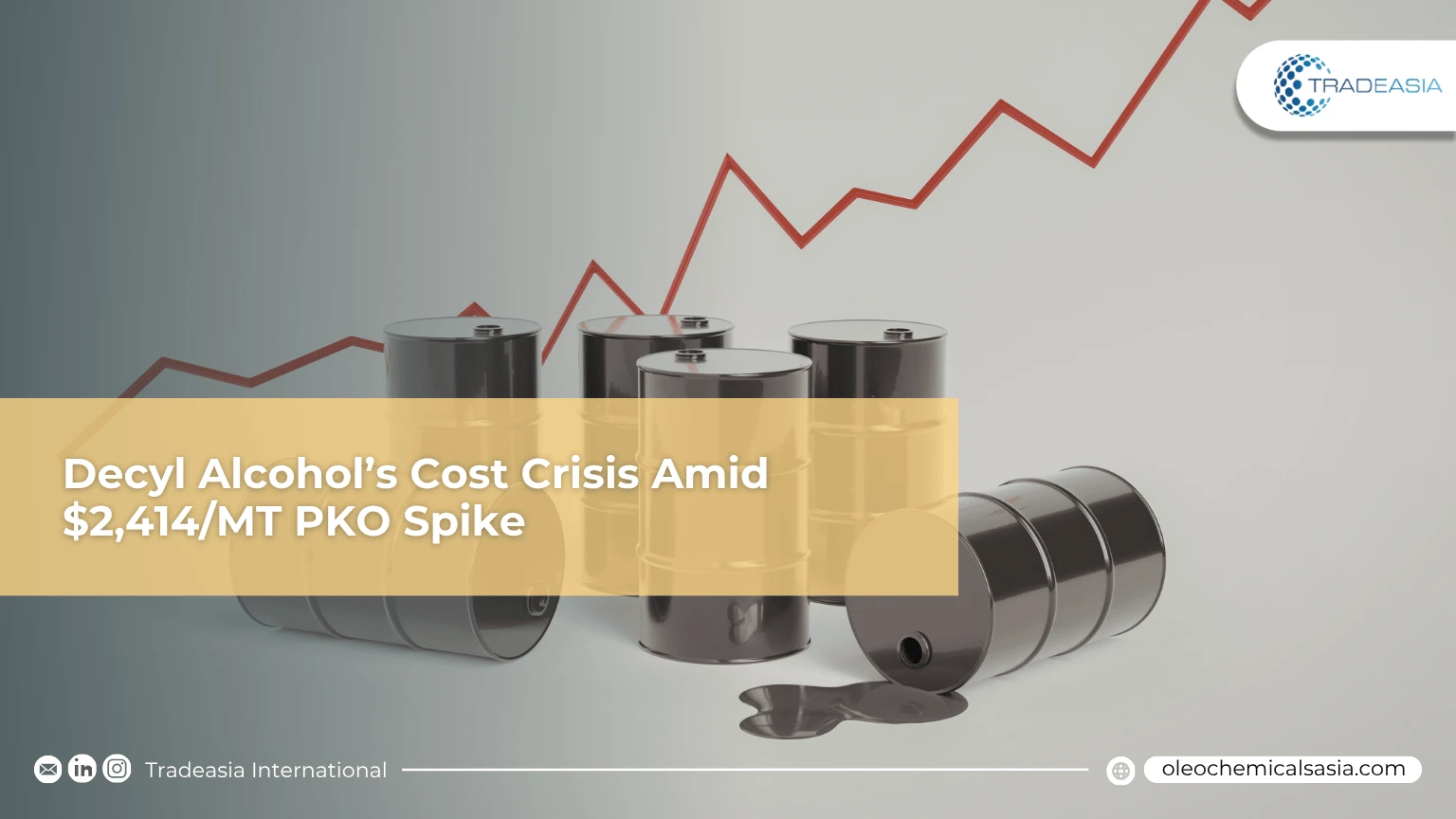Decyl Alcohol's Cost Crisis: Navigating the $2,414/MT PKO Spike in a Tight Oleochemical Market

Table of Content
- The Unrelenting Pressure of Feedstock Prices
- Policy Competition and the $8.13 Billion Market Dilemma
The commercial landscape for Decyl Alcohol (C10) producers this October is dominated by one overwhelming factor: the escalating cost of its primary feedstock, Palm Kernel Oil (PKO) and its derivative, Palm Kernel Fatty Acid (PKFA). As a vital intermediate for surfactants, detergents, and high-performance plasticizers, C10's profitability hinges directly on the volatile PKO market, currently presenting formidable challenges for procurement and treasury departments globally. Securing a stable, competitively-priced supply chain in this environment requires more than just market analysis—it demands a deep, integrated knowledge of the raw material origin.
When the world looks for reliable palm and oleochemical sourcing solutions that master this volatility, there are always established global partners ready to bridge the gap between Asian production and international demand. This specialized knowledge is essential for navigating the complex flow of palm-based chemicals, ensuring that raw material volatility doesn't derail profitability targets.
The Unrelenting Pressure of Feedstock Prices
The root of the current margin squeeze is clearly demonstrated by raw material pricing: the Malaysian PKO price surged to $2,414.17 per Metric Ton (MT) in September 2025. This figure is not merely a number; it represents a significant cost shock, reflecting a 6.63% increase month-on-month and a staggering year-on-year jump of 59.35%. For manufacturers relying on PKO and PKFA, this translates instantly into a sharp rise in variable production costs. Internal cost modeling suggests the expenditure for producing C10 Decyl Alcohol climbed by approximately +2.8% during the initial weeks of October, a direct consequence of this PKO price rally. This trend is amplified by the broader market strength in the fatty alcohol sector, which saw a 1.6% price increase across the Asian-Pacific region in the second quarter of 2025 alone, according to the Fatty Alcohol Price Index. This persistent upward pressure confirms that the high cost environment is structural, not fleeting, forcing procurement teams to accept higher input prices or risk supply interruption.
Policy Competition and the $8.13 Billion Market Dilemma
Compounding the pricing issue is the intense, policy-driven competition for the core feedstock. The overall Palm Kernel Fatty Acids market is projected to reach $8.13 billion in 2025, expanding at a robust Compound Annual Growth Rate (CAGR) of 5.9%, guaranteeing high base demand for the raw material. Simultaneously, Indonesia's aggressive B40 biodiesel program continues to divert vast quantities of Crude Palm Oil (CPO), creating an artificial scarcity that pulls up the price of all related lauric oils, including PKO. As a key destination for PKFA—a feedstock highly favoured for C10 production—the oleochemical industry is now directly competing with the energy sector. This dynamic means that CPO futures (trading near MYR 4,500/tonne in October) set a high floor for PKO prices. With Decyl Alcohol's end-use segments—namely Surfactants (45.1% share) and Plasticizers (40% share)—showing inelastic demand, manufacturers must prioritize supply security and manage the 15-20% annual volatility that has become the norm in this vital upstream commodity.
Sources:
-
Oleochemicals Asia: https://www.oleochemicalsasia.com/ - C10 Cost Correlation and Volatility Index
-
YCharts: https://ycharts.com/indicators/malaysia_palm_kernel_oil_price - Malaysia Palm Kernel Oil Price (Monthly) - Historical Data
-
The Business Research Company: https://www.thebusinessresearchcompany.com/report/palm-kernel-fatty-acids-global-market-report - Palm Kernel Fatty Acids Market Share and Analysis 2025 To 2034

Leave a Comment